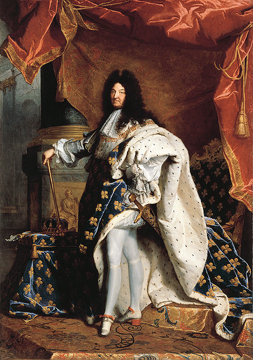May 21 2011
Camino de Santiago de CampostelaLife as a pilgrim in Spain is not all cerveza and skittles. Our friend Michelle is embarking on the Camino de Santiago de Campostela tomorrow to find out.
The ‘Way of St James’ is a collection of old pilgrim routes that have the cathedral at Santiago de Compostela in North West Spain as their final destination.
According to legend, St James the apostle travelled to Spain to preach the gospel. When he returned to Jerusalem, he was beheaded by Herod himself. His body was taken back to Spain by angels in a rudderless boat, and buried in Compostella. St James is to Spain, as St Patrick is to Ireland. Santiago is the Spanish word for ‘St James’. Santiago de Campostela ( ‘St James burial place’) is the city that was built around the relics, and is now the capital of Galicia, an ‘autonomous community’ of Spain.
Since the middle ages, the Camino de Santiago de Campostella (‘Way of St James’) has been one of the top three Christian pilrimages, or holy journeys – up there with Jerusalem and Rome. Pilgrims are rewarded with Plenary Indulgences, which are like ‘Get Out of Jail Free’ cards to reduce the time spent in purgatory after death (being married to Brendan, Michelle will have no need for extra plenary indulgences). By visiting sites associated with saints, some of their good deeds are credited to you – you benefit from the ‘Communion of Saints’ and receive a share of their deposit in the Treasury of Merit.
The Camino was very popular from about 1000 to the 1500s, but had been in some decline since. If this whole business has slipped under your radar, it would be because in the early 1980s only a handful of pilgrims arrived in Santiago each day (there were 690 pilgrims in 1985). However, since then there has been a resurgence of interest. The route was declared the first European Cultural Route by the Council of Europe in October 1987; it was also named one of UNESCO’s World Heritage Sites. Last year was a Holy Year (when the feast of St James falls on a Sunday) and more than 270,000 made it to Santiago (700 a day!). Some undertake the journey as a religious pilgrimage, some do it for a good long walk, and ‘many consider the experience a spiritual adventure to remove themselves from the bustle of modern life. It acts as a retreat for many modern “pilgrims”.’ (Wikipedia) At 700 people a day, it may soon be more peaceful to stay at home.
There are a number of different starting points that pilgrims may choose for the Camino. Many of these are in Southern France. The most popular route is the Camino Francés, starting from Saint-Jean-Pied-de-Port. The Northern Route (along the coastline from San Sebastian) and the Portuguese route (approaching Santiago from the South) are also popular.
Pilgrims travel with a document called the credencial, or pilgrim’s passport. As an official pilgrim, you can stay iinexpensively in hostels (known as a refugio or albergue). Each day you need to get your credencial stamped in one your albergue or in the local church.
The alberque are simple shared accomodation. Word on the street is that the two most unpopular fellow pilgrims are ‘bag rustlers’ who think it is a good idea to make a 4:30 am start, and ‘snorers’, who are likely to be the last out at 7am.
Start the day with a walk to the closest bar, to join fellow pilgrims in a coffee.
Then walk, and walk, and walk. Michelle plans to do about 35km each day, on the Northern Route.
Tortilla de patatas – egg and potatoes – on a bagette for lunch, perhaps.
In the evening, every town has a bar which serves the Pilgrim’s menu. Three course with wine for 7- 10 Euro. Soup or salad as entree. Fish or chicken or meat, desert of ice cream or fruit.
How long it takes depends on were you start, how fast you walk, how long you choose to walk each day, and how long you’ve got. The full Northern Route is 960 km and takes about 6 weeks. Many spend 8-9 weeks on the longer routes. You can, of course, start or stop wherever you like.
When you arrive in Santiago, if your credencial proves that you have travelled at least 100km, you can be awarded a compostela, a certficate of accomplishment. If, unlike Michelle, you are in desperate need for Plenary Indulgences as quickly as possible, you should start from the Spanish city of Sarria, which is just over the 100km mark.
A special mass is held in the Cathedral each day at noon, where the names and countries of origin of pilgrims who have gained a compstella the day before are announced. They also have penance in a number of different languages – I think it would be a good idea to go to the Portuguese speaking priest to confess.
Have fun, Michelle, and let us know how you go.
Some travel sites:
- http://www.caminodesantiago.me.uk/
- http://www.spain.info/en/conoce/grandes-rutas/caminodesantiago/
- http://kellycrull.com/podcasts/el_camino_de_santiag/
 1986
1986



















 RSS - Posts
RSS - Posts

